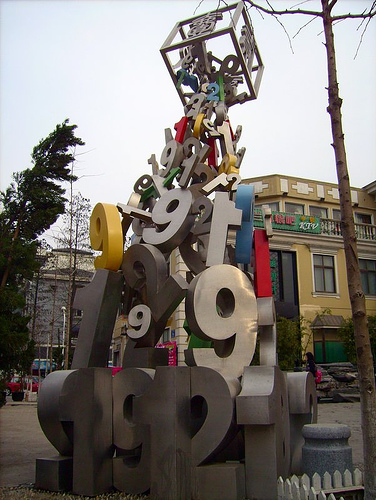Nanjing 1912
During our topic discussion, the teacher mentioned Nanjing 1912. She said: Seeing 1912 always makes her think of 2046... they're all numbers, and they are all very meaningful...
The 1912 district, not far from our school, is indeed very appealing. Unfortunately, I've never had the chance to truly linger in that area...
The teacher's mention of the naming of 1912 sparked my curiosity:
I found the following information: (Source: Xinhua News Agency)
1912 is the first year of the Republic of China, and the name "Nanjing 1912" stood out among more than 600 collected proposals, touching everyone's hearts. Indeed, the Republic era was the most prosperous and flourishing period in Nanjing's history, a beautiful yet poignant dream for the city.
At that time, Nanjing gathered the most prominent political figures and academic scholars, making it a place where East met West. Influenced by Western trends, the architecture and social customs of the Republic era carried a blend of Chinese and Western elements. This historical experience and nostalgic sentiment naturally became the best backdrop for fashionable consumption.
"Nanjing 1912" is located at the intersection of Changjiang Road and Taiping North Road in Nanjing. It consists of 17 buildings in the Republic style and four street squares named "Republic," "Universal Love," "New Century," and "Pacific," covering a total area of over 30,000 square meters. This cluster of buildings, with their gray-green and brick-red hues, has an ancient and delicate style. They are arranged in an L-shape around the "Presidential Palace," becoming a new highlight of Nanjing's Changjiang Road Cultural Street characterized by Republic culture.
Wang Wei, a reporter for the China Modern History Relics Museum (i.e., the "Presidential Palace"), introduced that according to the original plan, this entire area would be included within the "Presidential Palace" grounds, designed as exhibition halls. However, it was eventually decided to develop it as a complementary facility to the "Presidential Palace," turning it into a leisure and consumption venue with cultural taste and historical depth. This would enhance the environment around the Presidential Palace and promote the culture of the Republic era. "We want people who have visited Nanjing to think of the Presidential Palace when they hear 1912, and to think of 1912 when they see the Presidential Palace."
In the planning and development of this project, this goal was expressed as "the former Presidential residence, now the city's living room." Li Tiancheng, chairman of Nanjing Oriental Three Harvest Investment Advisory Co., Ltd., said that the "Presidential Palace" in Nanjing is where Dr. Sun Yat-sen took his oath on January 1, 1912, to become the provisional President of the Republic of China. The neighboring Republic-era building complex possesses profound historical and cultural significance. Building a leisure and cultural commercial center here that combines historical characteristics with modern fashion aims to transform "Nanjing 1912" into a modern urban living room that blends Chinese and Western elements, integrates fashion, and boasts a rich cultural heritage, comparable to Shanghai's "Xintiandi." Therefore, despite its ultimate use still being commercial, the design style of "Nanjing 1912" must remain consistent with the overall appearance of the Presidential Palace site buildings. The Presidential Palace is a concentrated representation of the Republic-era architectural style in Nanjing, and "Nanjing 1912," relying on the Presidential Palace, embodies the spirit of Republic architecture. Among the 17 buildings, five are original Republic-era structures.




